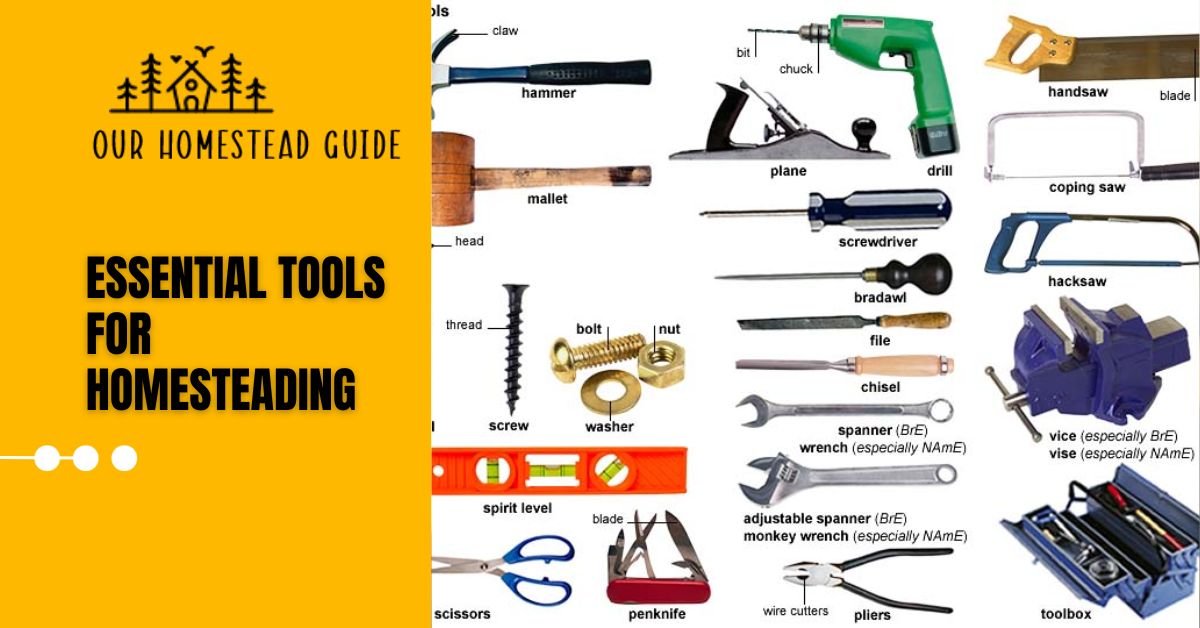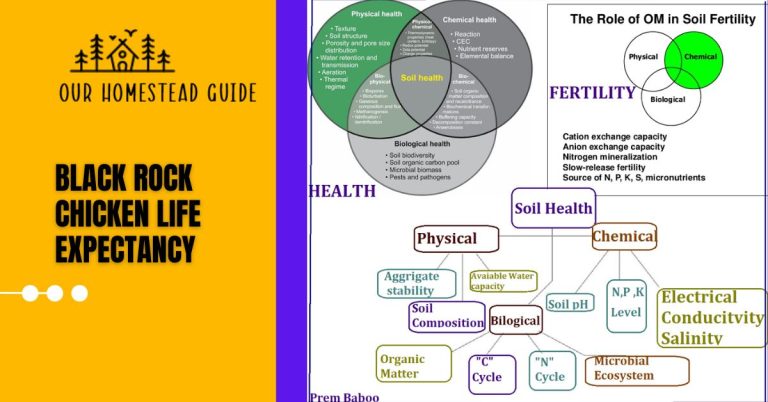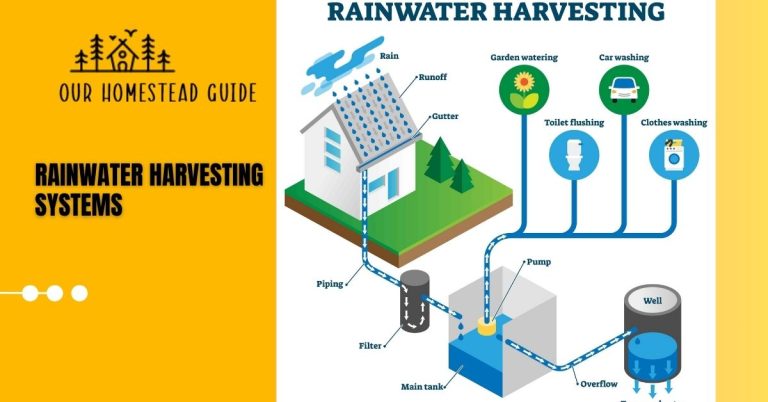50 Essential Tools For Homesteading: Complete Guide
There are two main categories of essential tools for homesteading gardening tools and animal care items. In addition to a set of standard hand tools like a hammer, screwdrivers, pliers, tape measure, and level, gardening supplies include a robust shovel, garden rake, hoe, pruning shears, watering container, and compost bin or pile. For do-it-yourself jobs and repairs, a workbench is also useful.
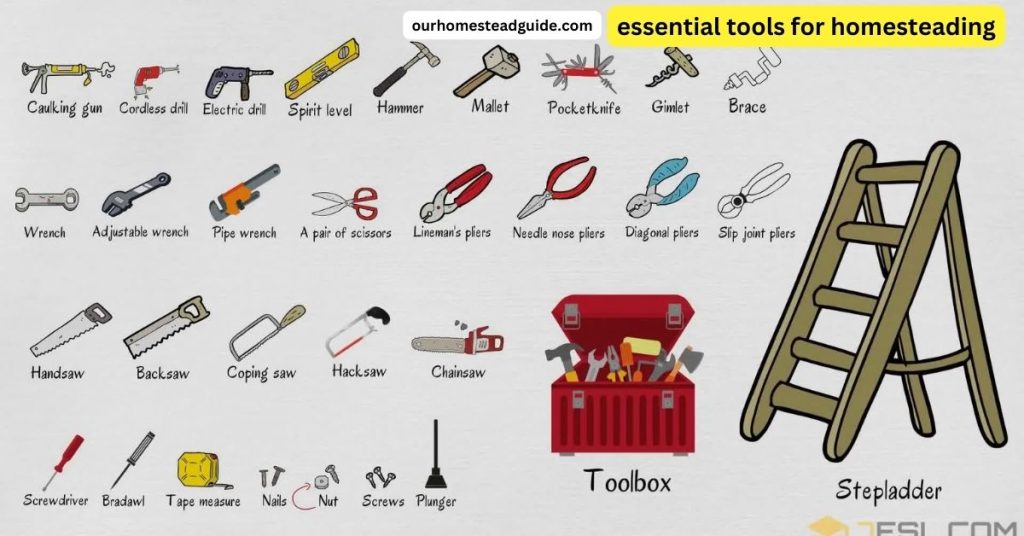
A chicken coop or animal housing, feeding troughs and waterers, fencing, a muck rake or pitchfork, an animal first-aid kit, and a wheelbarrow for moving feed, bedding, and manure are all necessary equipment for caring for animals on a homestead.
50 Essential Tools For Homesteading
Shovel
Shovel: For moving dirt, stirring compost, and excavating planting holes, a good shovel is needed.
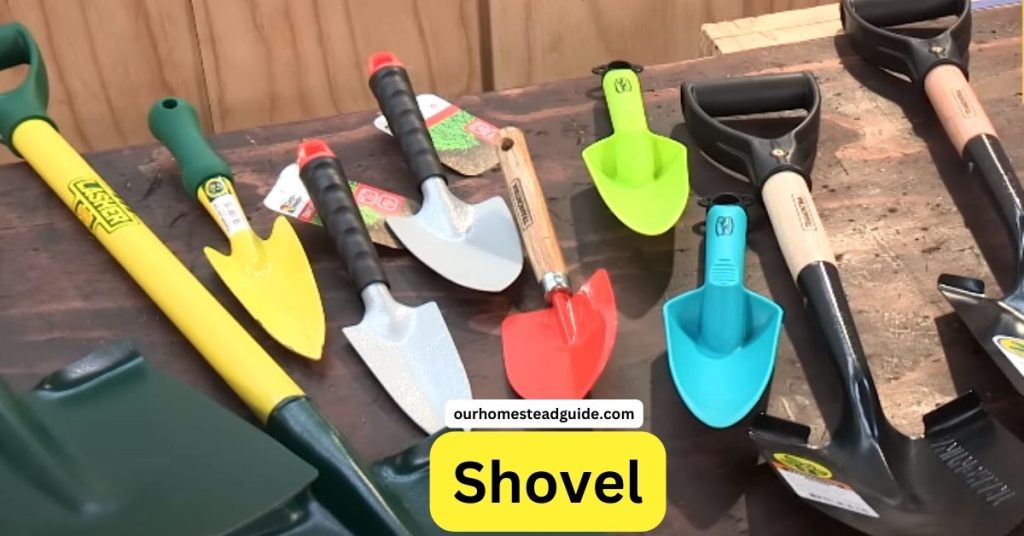
Garden rake
Amid seasonal turmoil, a garden rake is an instrument of order, a reliable partner in the green symphony. Its broad head, encrusted with pliable steel or wood fingers, combs across lawns, collecting loose leaves and errant branches in the form of a wave. Rakes come in all forms and sizes, each appropriate for a particular dance, from whispers of bamboo to robust warriors made of metal.
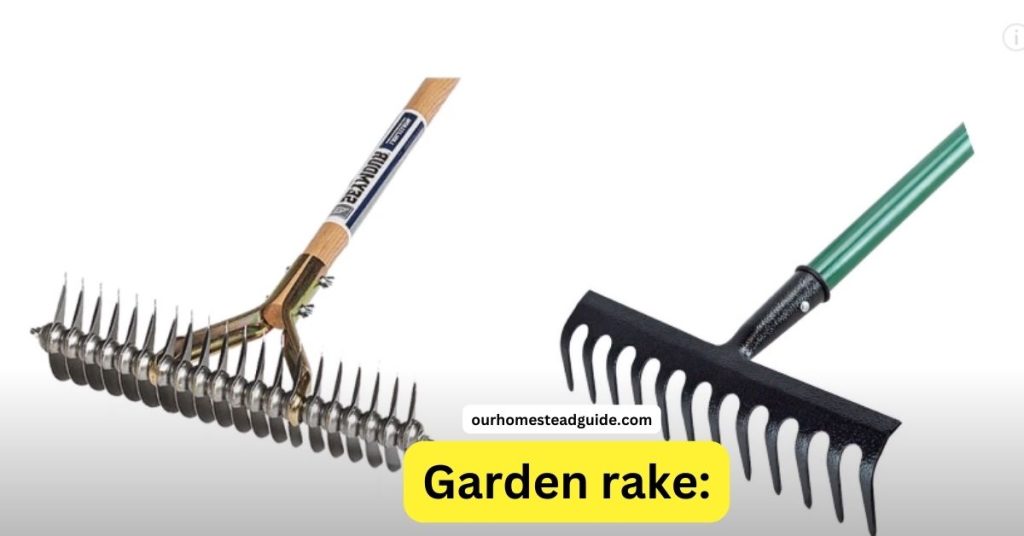
Some dance with light foliage, their pliable talons softly luring trash into light heaps. Others, wide and muscular, dance with weighty detritus, their powerful spines snaking through matted grass and fallen trees. The garden rake creates a stage that is prepared for the next performance by nature, whether it is a soft feathering or a forceful comb. It also sets the rhythm of neat walkways and beds.
Hoe
The unsung hero of the garden, the grub hoe, is a tough fighter against overgrown spots and obstinate roots. Imagine a large, rectangular, sharp blade made of steel that gleams and can dominate thick earth.
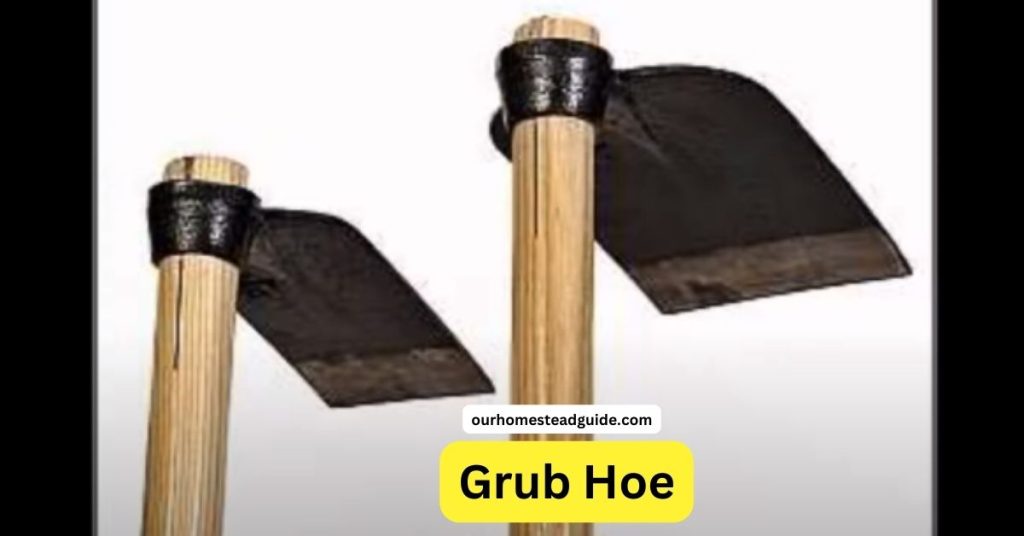
Its robust neck joins to a lengthy hardwood handle, which is frequently topped with a reassuring “D” grip that welcomes tired hands. The grub hoe, in contrast to its delicate hoe relative, loves rough-and-tumble gardening. It merrily chops through compacted soil and breaks the taproots of stubborn weeds.
It sculpts trenches with uncompromising efficiency and lifts stones, exposing hidden gems with a pleasant swing and hard pull. It’s a tool for a determined stomp-and-shove waltz that leaves the earth defeated and the gardener victorious, not for elegant pirouettes.
Pruning shears
Pruning shears are the agile prima ballerina in the lush ballet of the garden. Sharp as a whispered secret, steel blades glide with accuracy, molding the canvas of greenery. Shears whisper through delicate stems, unlike their burly lopper siblings, creating clean, precise cuts that encourage healthy development.

With each snip, their ergonomic, frequently soft-gripped handles become an extension of the gardener’s hand, bringing purpose to fruition. Pruning shears are the tools of controlled elegance, leaving a work of controlled beauty in every cut, whether you’re carefully sculpting a bonsai or trimming off a straying branch.
Watering can
A modest garden hero, the watering can conduct tunes that give life. Its protuberant belly hums with the promise of lush development, holding gallons of liquid nourishment within.
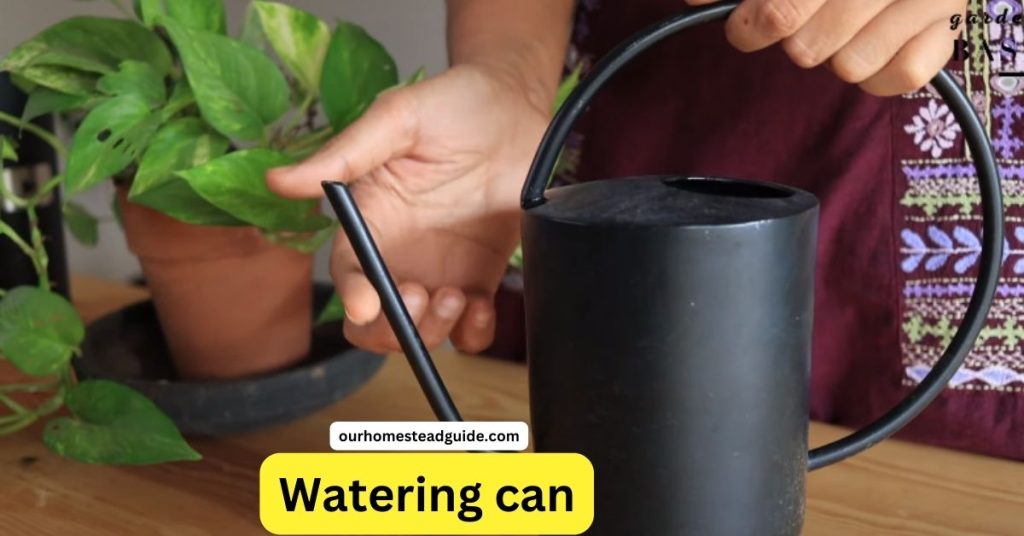
A thirsty spout at the end of an attractive, arching thin neck is prepared to release a joyful flow of rainwater or a quiet downpour of droplets. Each can have a distinct beat, ranging from lightweight plastic sprites dancing in vivid hues to terracotta warriors glazed with the kiss of the sun.
Some of them replicate the steady drizzle of nature, whispering soothing lullabies to thirsty plants. Others let out audacious choruses, their wide-mouthed spouts refreshingly showering parched blossoms with a rain of water.
Hammer
The hammer swings its baton, directing nails into position and sculpting raw materials to the craftsman’s desire in the symphony of building and repair. Perched on a robust handle, its head resembles a steel fist, ready to engage in a percussion duet with stone, metal, or wood.
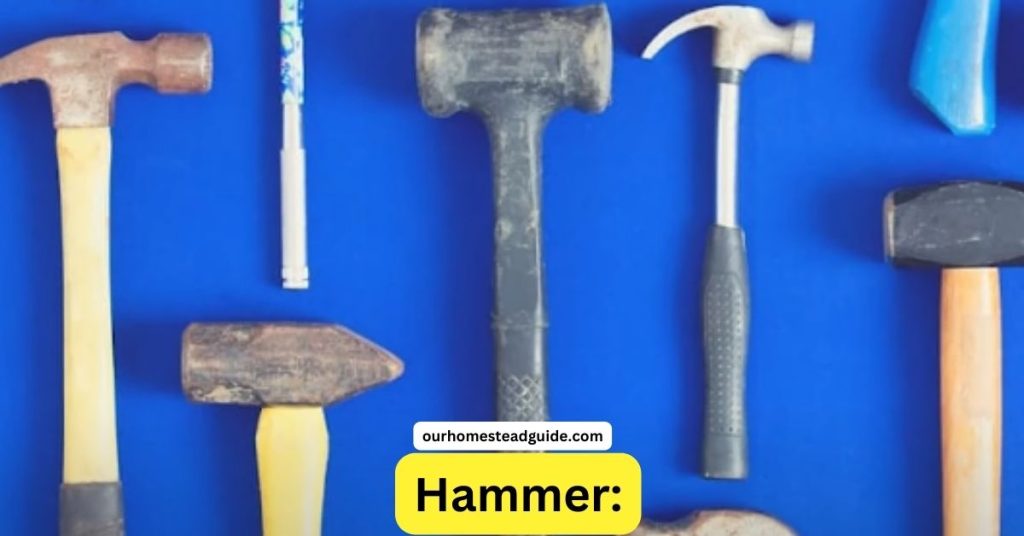
Every swing has a rhythmic function, be it a soft tap that helps a nail go in or a determined pound that overcomes tough opposition. With a pleasing ring, its weight translates intention into shape and becomes an extension of the user’s arm, either comfortable or intimidating depending on the work at hand.
Each hammer, from tiny tack hammers that whisper accuracy to powerful sledgehammers that roar authority, adds its voice to the chorus of creation, leaving a trace of human determination and the subdued poetry of well-driven nails.
Screwdriver set
The screwdriver set is the most adaptable household equipment, capable of handling any symphony of unexpected turns and turns that life throws at you.
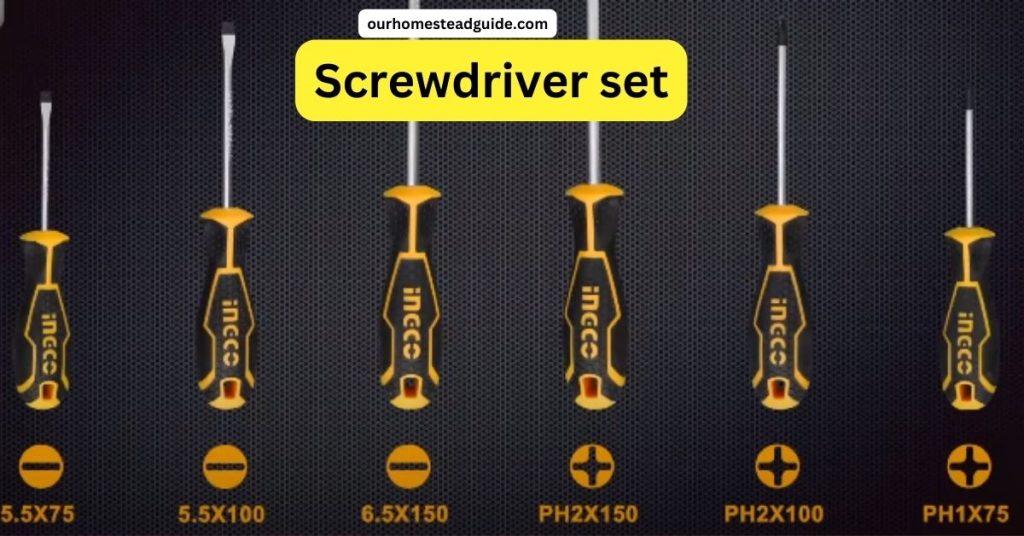
Imagine a chorus of thin steel wands, each with its own distinctive head, all skillfully designed to fit a variety of screws. Every piece in the collection has a unique voice, ready to blend harmoniously with its intended fastener. These include the timeless flat-head, the star-like beauty of the Phillips, and the lesser-known Torx with its six-pointed embrace.
The handles, which are frequently made of warm polished wood or vivid plastic colors, provide a secure hold and encourage the hand to perform a delicate ballet of dexterity and torque. Eager to please, some sets include heads that can be switched out, making transitions between activities a breeze. Others, more specialized, communicate with the robust strength of building or whisper secrets of technology.
The screwdriver set offers a symphony of answers, each turn a harmonic note in the continuous orchestra of repair and creativity, whether building a child’s toy or disassembling a recalcitrant appliance.
Pliers
Pliers emerge as the multifaceted maestros in the symphony of steel and perspiration in the workshop, grabbing, twisting, and bending with unwavering conviction. Imagine two steel-hardened jaws that are permanently engaged in a quiet embrace, supported by a strong joint.
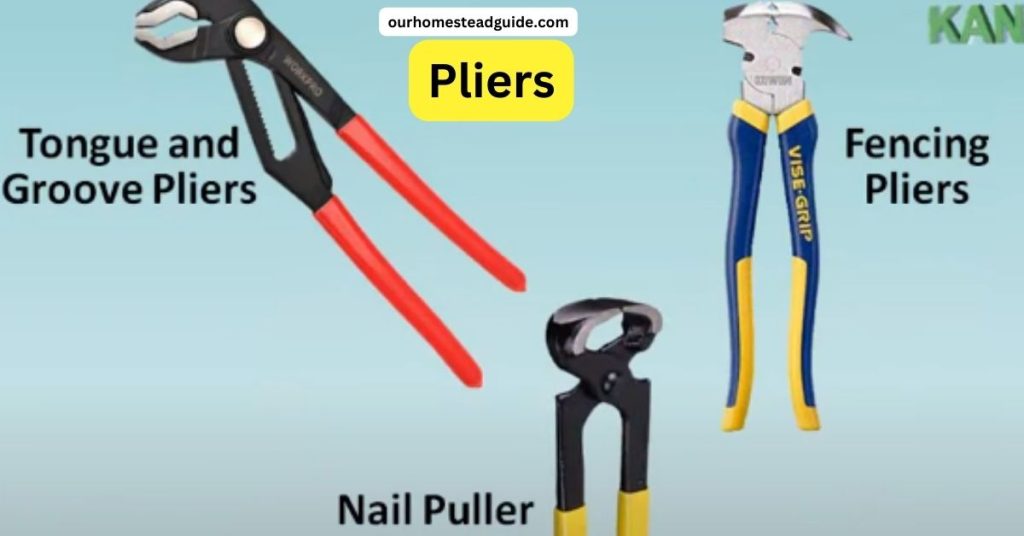
With unyielding tenacity, their sharp and unforgiving serrated teeth pierce through plastic, metal, and wood. Every pair has a unique sound, whether it’s the graceful needle-nose pliers that whisper through thin wires or the robust lineman’s pliers that slam obstinate bolts with a metallic moan.
Comfort-molded handles, which are frequently coated in colorful rubber or textured plastic, become an extension of the hand and convert purpose into directed force. Pliers may be used as temporary hammers in an emergency, to coax obstinate nails out of their wooden lairs, and to bend recalcitrant wires into elegant arcs.
Tape measure
A flexible ruler used to measure distance or length is called a tape measure. It is made up of a long, thin ribbon made of metal, fiberglass, plastic, or linen that is marked along with linear measurements. When not in use, the ribbon may be retracted using a spring mechanism within a little casing that holds it.
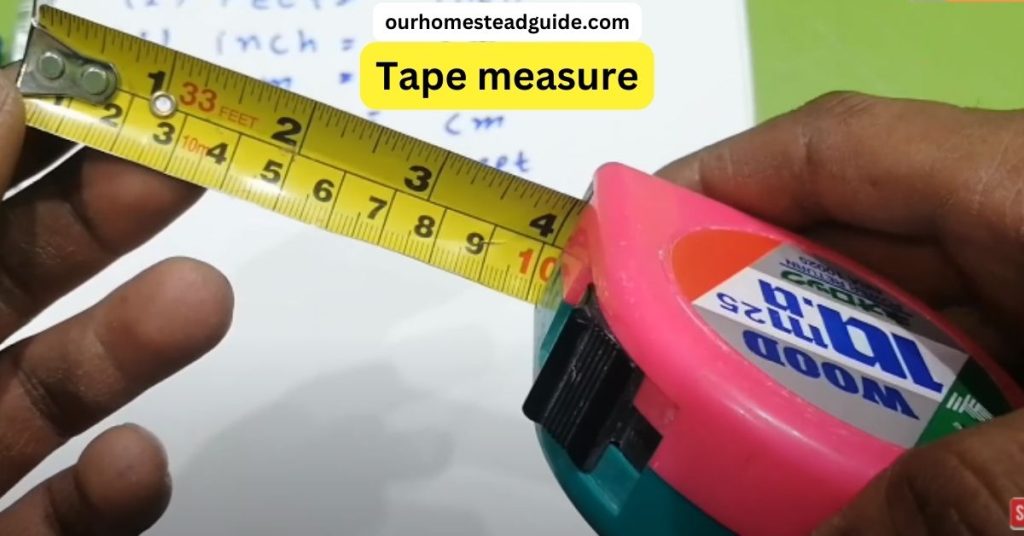
The ribbon has two ends: one with a stop that may be pushed to secure the ribbon in place, and the other with a metal hook that can be fastened to the end of the object being measured. Simply extend the ribbon to the required length and read the measurement from the markings to use a tape measure.
| Tool | Description | |
|---|---|---|
| Gardening: | ||
| 1. Shovel: Sturdy and versatile for digging, turning soil, and moving materials. | Planting, composting, trenching, clearing paths. | |
| 2. Garden rake: Collects leaves, debris, and smooths soil surface. | Preparing seedbeds, leveling planting areas, spreading mulch. | |
| 3. Hoe: Weeds, cultivates soil, and creates planting furrows. | Removing weeds, aerating soil, forming hilling rows. | |
| 4. Pruning shears: Trim branches, shrubs, and small trees. | Maintaining plant health, shaping bushes, harvesting fruits and herbs. | |
| 5. Loppers: Cut thicker branches and small tree limbs. | Pruning larger trees, removing deadwood, clearing brush. | |
| 6. Gloves: Protect hands from blisters, thorns, and dirt. | Handling tools, weeding, harvesting crops, general gardening tasks. | |
| Animal Care: | ||
| 7. Pitchfork: Manure handling, moving hay, straw, and bedding. | Cleaning stalls, feeding livestock, composting, spreading mulch. | |
| 8. Feed pail/bucket: Transport food and water to animals. | Feeding chickens, rabbits, goats, sheep, etc. | |
| 9. Watering can: Water small gardens, seedlings, and individual plants. | Targeted watering, nurturing delicate plants, supplementing rainfall. | |
| 10. Animal brush: Groom fur, remove dirt and parasites from animals. | Maintaining animal health, improving coat condition, bonding with pets. | |
| Construction and Maintenance: | ||
| 11. Hammer: Drive nails, assemble structures, perform general repairs. | Building projects, hanging shelves, fixing furniture, mending fences. | |
| 12. Saw (circular, jigsaw, hand): Cut wood for various projects and repairs. | Building sheds, furniture, fences, trimming boards, quick cuts. | |
| 13. Drill and screwdriver: Assemble furniture, install hardware, make repairs. | Joining wood pieces, attaching hinges, securing fixtures, basic carpentry. | |
| 14. Level: Ensure walls, fences, and structures are upright and plumb. | Accurate construction, preventing leaning structures, maintaining stability. | |
| 15. Tape measure: Measure distances, plan projects, ensure accurate cuts. | Planning layouts, calculating material needs, precise cutting for carpentry. | |
| Preservation and Food Storage: | ||
| 16. Canning jars and lids: Preserve fruits, vegetables, and meats for long-term storage. | Homemade jams, pickles, sauces, storing homegrown produce, self-sufficiency. | |
| 17. Pressure canner: Safely process low-acid foods for long-term preservation. | Can meat, poultry, fish, and some vegetables for extended shelf life. | |
| 18. Dehydrator: Preserve fruits, vegetables, and herbs by removing moisture. | Creating healthy snacks, dried herbs for cooking, extending shelf life. | |
| 19. Root cellar/pantry storage: Cool, dark space for storing vegetables, fruits, and canned goods. | Minimize food waste, ensure fresh produce availability during winter months. | |
| Miscellaneous: | ||
| 20. Headlamp: Work outdoors after dark, navigate dimly lit spaces. | Checking on animals, working on projects, exploring at night. | |
| 21. Wheelbarrow: Transport heavy materials like soil, mulch, and firewood. | Efficiently move large loads, reduce strain on back, garden cleanup. | |
| 22. Ladder: Reach high places for cleaning, repairs, and maintenance. | Access gutters, paint roofs, clean windows, harvest fruit from tall trees. | |
| 23. Multi-tool: Pocket-sized collection of useful tools for quick repairs and fixes. | Open bottles, tighten screws, cut wires, a versatile problem-solver. | |
| 24. Work boots: Durable and waterproof footwear for outdoor work. | Protect feet from moisture, mud, stones, and animal bites. | |
| 25. First-aid kit: Prepared for minor injuries and emergencies. | Treat cuts, scrapes, burns, insect bites, etc. |
Level
The most important tools for leveling vary depending on the particular work at hand, but there are a few universal ones that are useful for a variety of tasks. Here are a few important actors:
Spirit level: This traditional instrument determines if a surface is properly vertical or horizontal using a bubble vial. They come in a variety of shapes and sizes, ranging from short torpedo levels perfect for building to small keychain levels.
High-tech and accurate, laser levels shoot a beam of light over a room or workstation to form a precisely level line. For large-scale tasks like mounting shelves or tiling floors, they are very useful.
Carpenter’s level: This multipurpose instrument checks plumpness, or vertical alignment, and levelness by combining a spirit level with a square. Ideal for hanging cabinets, framing walls, and making sure furniture is positioned precisely.
Transit level: A transit level offers excellent accuracy over extended distances for jobs including surveying and outdoor leveling. It measures elevation differences precisely with a telescope and crosshairs.
Straight edge: Although not technically a level, a straight edge is very useful for ensuring that two or more surfaces are aligned. A straightforward yet efficient method of achieving levelness is to simply set it over the surfaces and check to see whether they lie flat.
Feeding trough and water
A happy coop depends on keeping your feathered friends fed and hydrated, and selecting the appropriate waterer and feeding dish may simplify your life and that of your hens.
Feed troughs are available in a range of sizes and forms, from hanging buckets with little spillage to basic plastic trays. Make sure the material is sturdy and simple to clean, such as plastic or metal, and select a size that can accommodate all of your hens without being too crowded.
Diverse solutions are available for waterers as well, ranging from traditional hanging bell drinkers to automated systems that continuously provide clean, fresh water. While making your selection, keep your flock’s size and environment in mind.
Drill
A hand drill is a need for many wood crafts, as you are undoubtedly aware of (or will soon discover). I even needed to use a drill to make ventilation holes all around my plastic drum compost container.
Wagon Or Wheelbarrow
There will undoubtedly be a lot of lugging, moving, and transferring on your property. A wheelbarrow or cart works great for carrying your supplies and equipment. It’s quite practical for transporting dirt, compost, or compost-related goods.
Sawmill
It may or may not be feasible to need a sawmill on your farm, depending on how much and how often you utilize wood. Wood pieces can be chopped using a chainsaw, but a sawmill can certainly accomplish the job more effectively and cleanly.
best heavy equipment for homestead
Although the “best” heavy equipment for your homestead will mostly rely on your unique requirements and land, the following top options will significantly improve your situation:
Compact tractor:
Equipped with a range of attachments, this adaptable workhorse can do several jobs including mowing, tilling, plowing, transporting, and snow removal. Select from fuel-efficient gasoline versions for smaller holdings or powerful diesel ones for larger areas.
Zero-turn mower:
With its short turning radius and comfortable operation, a zero-turn mower makes lawn care a breeze for big open expanses or well-kept lawns. Choose walk-behind models for smaller lawns or riding ones for larger expanses.
Log splitter:
A log splitter might save you backbreaking effort if you burn firewood for warmth or have a forested area on your property. While gas-powered machines give greater power for handling challenging logs, electric models are more quiet and practical.
Wood chipper:
Use a wood chipper to turn prunings and yard trash into mulch, wood chips, or fuel for landscaping. Select gas-powered versions for bigger branches or electric ones for a quieter operation.
homesteading kitchen tools
Tools for your homesteading kitchen should be as dependable and adaptable as you are! The following tools are necessary for each operation, from harvest preservation to harvest preparation using homegrown produce:
Sharp knives:
The holy trinity of kitchen tools is a fine chef’s knife, paring knife, and serrated bread knife, which can be used for anything from slicing bread to cutting vegetables. Keep them sharp as a saw to ensure safe and effective use.
Cast iron skillet:
Known for its exceptional searing and even baking capabilities, this pan can also be used as a Dutch oven. It’s ideal for baking a dense cornbread or sizzling up a farm-fresh breakfast.
Speaking of dutch ovens, this enameled marvel is capable of baking bread, roasting fowl, and slow-cooking stews. It is a star in any farmhouse kitchen because of its adaptability and capacity to hold heat.
Blender and/or food processor:
These workhorses can easily prepare purees, chop nuts, and whip cream. Use a blender to create smooth smoothies or a food processor for its exceptional chopping abilities.
Canner under pressure:
A pressure canner will keep the abundance of your crop fresh for several months. Prepare meat and vegetables in a low-acid manner for long-term preservation so you may continue to enjoy your homegrown produce far into the winter.
Measurement cups and mixing bowls:
A pair of robust mixing bowls and measuring cups are important for any baking or culinary task, from preparing pancake batter to tossing a salad.
Most Frequently Asked Questions!
Q: What are the absolute must-have tools for any homesteader?
Essential Tools For Homesteading Depending on your unique requirements and property, a shovel, rake, hoe, pruning shears, hammer, saw, drill, tape measure, work gloves, and first aid kit are some typical need.
Q: How much should I budget for homesteading tools?
Depending on the brand, quality, and particular requirements, tool costs might differ significantly. Based on your goals, create a reasonable budget. To save expenses, think about purchasing used tools or borrowing from neighbors.
Q: Where can I find good deals on homesteading tools?
For good bargains, check local classified ads, garage sales, internet merchants, and agricultural supply stores. For more affordable solutions, think about reconditioned or well-used tools.
Q: What are the most important tools for gardening?
Basic gardening supplies include a shovel, rake, hoe, pruning shears, hand trowel, watering container, gloves, and high-quality seeds. You may require extra items such as a wheelbarrow, compost bin, or garden hose, depending on the crops you grow.
Q: Do I need a power tiller for my garden?
Your garden’s size and kind will determine this. For larger vegetable plots, a tiller can save time and labor; but, for smaller beds, a manual tiller or broad fork could be adequate. When choosing your choice, take into account the kind of soil and any physical constraints.
Q: What tools do I need for composting?
The essential instruments for composting are a thermometer, shovel, compost bin, and pitchfork. To turn the compost pile, you can also use hand tools like a hoe or rake.
Q: What tools do I need for chickens?
A feeder, waterer, nesting boxes, rake and shovel for cleaning the coop, and gloves are all necessary equipment for hens. You may also want fences, perches, and an animal first aid kit, depending on how you put everything up.
Q: What tools do I need for goats or sheep?
For goats or sheep, you will need a strong stall or shelter, fencing, feeders, waterers, hay rake and pitchfork, foot trimmers, and gloves. Depending on your demands, you may also require a livestock trailer, shearing tools, and milking equipment.
Q: What tools do I need for basic repairs and maintenance around the homestead?
For small construction jobs and tool repairs, a variety of pliers, a level, a tape measure, a saw, and a screwdriver come in handy. For safe labor, you also need a ladder, work gloves, and safety glasses.
Q: Do I need a tractor for my homestead?
For bigger estates, particularly those with fields or heavy-duty activities, a tractor may be of great assistance. They do, however, need upkeep and might be costly. Prior to purchasing a tractor, consider your needs and financial situation.
you may also like this article.

